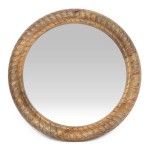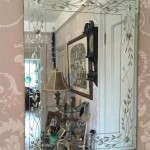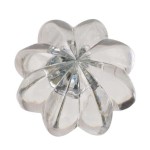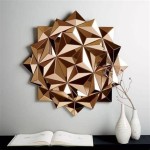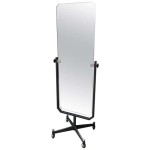What Kind of Image is Always Produced by a Convex Mirror?
Convex mirrors, characterized by their outward-curving reflective surface, consistently produce a specific type of image. Understanding the nature of this image requires a closer look at the principles of reflection and how they apply to this unique mirror shape.
Light rays incident on a convex mirror diverge upon reflection. This divergence is the key to understanding the image formed. Instead of converging to a real focal point in front of the mirror like concave mirrors, the reflected rays appear to originate from a point behind the mirror. This point is called the virtual focal point. It's "virtual" because no light actually passes through this point; it merely appears to emanate from it when tracing back the reflected rays.
The image produced by a convex mirror is always
virtual
,upright
, anddiminished
. Let's break down each of these characteristics:Virtual:
A virtual image is formed when light rays appear to diverge from a point, but do not actually converge. As explained earlier, the reflected rays from a convex mirror diverge and seem to come from a point behind the mirror's surface. Since the light rays do not physically intersect, the image cannot be projected onto a screen. It exists only as an optical illusion created by the diverging reflected rays.Upright:
An upright image, also known as an erect image, is oriented in the same direction as the object. In contrast to some images formed by concave mirrors which can be inverted, images in convex mirrors always maintain the same vertical orientation as the object being reflected.Diminished:
A diminished image is smaller than the object. Due to the diverging nature of the reflected rays, the image formed by a convex mirror is always smaller than the object itself. This reduction in size provides a wider field of view, a key reason for their application in various scenarios.The location of the image in a convex mirror is always behind the mirror's surface and between the virtual focal point and the mirror's vertex (the center of the mirror's surface). The exact position and size of the image depend on the object's distance from the mirror and the mirror's curvature. As the object moves closer to the mirror, the virtual image also moves closer to the mirror and increases slightly in size, while still remaining smaller than the object.
The properties of the image formed by a convex mirror stem directly from its shape. The outward curve of the mirror surface causes the reflected rays to spread outwards, leading to the characteristic virtual, upright, and diminished image. This consistent image formation makes convex mirrors useful in a variety of applications.
One of the most common uses of convex mirrors is in vehicle side-view mirrors. The wide field of view provided by the diminished image allows drivers to see a larger portion of the area behind and beside them. This increased visibility enhances safety by reducing blind spots.
Security mirrors, frequently used in shops and stores, also utilize convex mirrors. The wide field of view allows for monitoring a large area, effectively deterring theft and enhancing security. The diminished size of the image, while making individuals appear smaller, still allows for observation of movement and activity within the monitored space.
Convex mirrors also find applications in various other contexts, such as at blind corners in roadways and hallways to improve visibility, and even in some telescopes to gather and focus light.
The consistent formation of a virtual, upright, and diminished image is a fundamental characteristic of convex mirrors. This property, arising directly from the diverging reflection caused by the mirror's outward-curving shape, makes convex mirrors a valuable tool in various applications where a wider field of view is advantageous, prioritizing the overview of a larger area over the detailed magnification of a smaller one.
Understanding the type of image produced by a convex mirror is crucial for effectively utilizing these mirrors in their various applications. The principles of reflection and the geometry of the mirror's surface explain this consistent image formation, highlighting the relationship between the mirror's shape and the nature of the image it produces.
Is It Possible For A Convex Mirror To Produce Real Image When The Object Virtual Quora

A Convex Mirror Always Produces An Erect Real Image Of Diminished Sizean Virtual And Enlarged Sizea Size
Is It Possible For A Convex Mirror To Produce Real Image When The Object Virtual Quora

05 Convex Mirrors

Magnification Produced By A Convex Mirror Is Always Equal To1b Less Than 1c More 1d Zero

Convex Mirrors

Convex Mirror Image Formation Conditions Ray Diagram Uses

Convex Mirror Image Formation Conditions Ray Diagram Uses
Is It Right A Convex Mirror Always Forms An Inverted Image Quora

A Mirror Always Produces Erect Small And Virtual Image Wver May Be The Position Of Object In Front Brainly

